Abstract
The redox dye 5-cyano-2,3-ditolyl tetrazolium chloride (CTC) was employed for direct epifluorescent microscopic enumeration of respiring bacteria in environmental samples. Oxidized CTC is nearly colorless and is nonfluorescent; however, the compound is readily reduced via electron transport activity to fluorescent, insoluble CTC-formazan, which accumulates intracellularly. Bacteria containing CTC-formazan were visualized by epifluorescence microscopy in wet-mount preparations, on polycarbonate membrane filter surfaces, or in biofilms associated with optically opaque surfaces. Counterstaining of CTC-treated samples with the DNA-specific fluorochrome 4',6-diamidino-2-phenylindole allowed enumeration of active and total bacterial subpopulations within the same preparation. Municipal wastewater, groundwater, and seawater samples supplied with exogenous nutrients yielded CTC counts that were generally lower than total 4',6-diamidino-2-phenylindole counts but typically equal to or greater than standard heterotrophic (aerobic) plate counts. In unsupplemented water samples, CTC counts were typically lower than those obtained with the heterotrophic plate count method. Reduction of CTC by planktonic or biofilm-associated bacteria was suppressed by formaldehyde, presumably because of inhibition of electron transport activity and other metabolic processes. Because of their bright red fluorescence (emission maximum, 602 nm), actively respiring bacteria were readily distinguishable from abiotic particles and other background substances, which typically fluoresced at shorter wavelengths. The use of CTC greatly facilitated microscopic detection and enumeration of metabolically active (i.e., respiring) bacteria in environmental samples.
Full text
PDF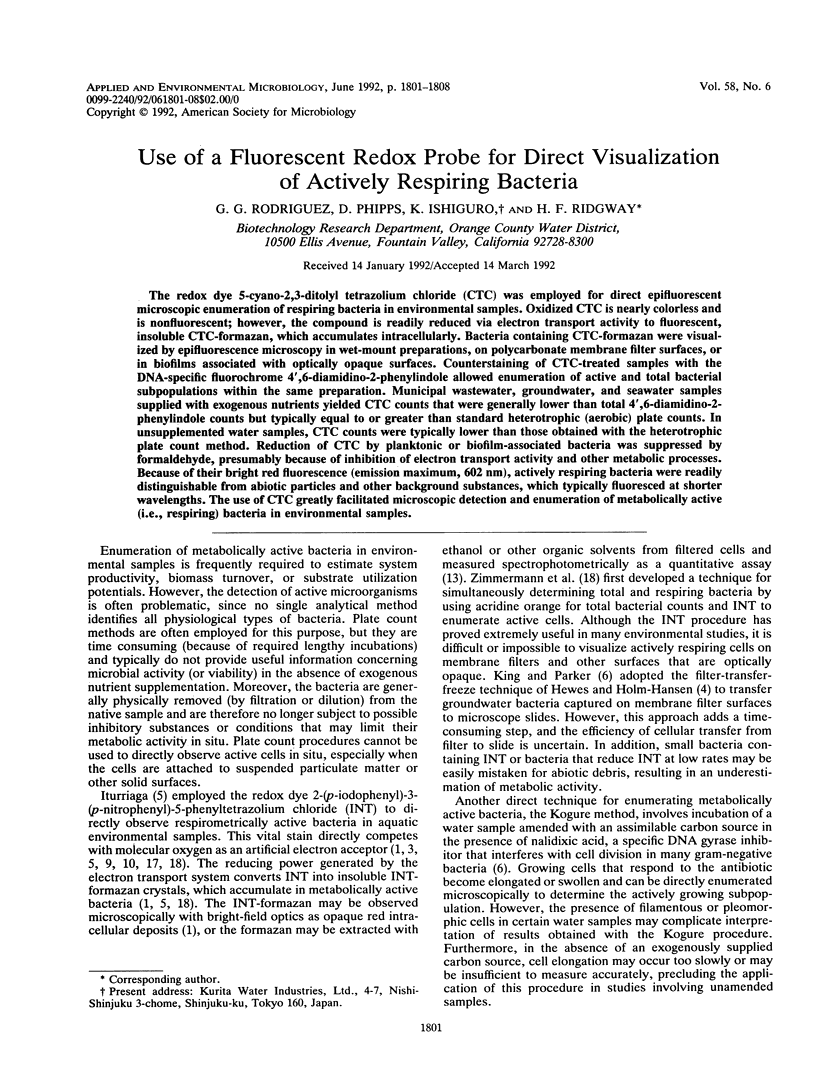
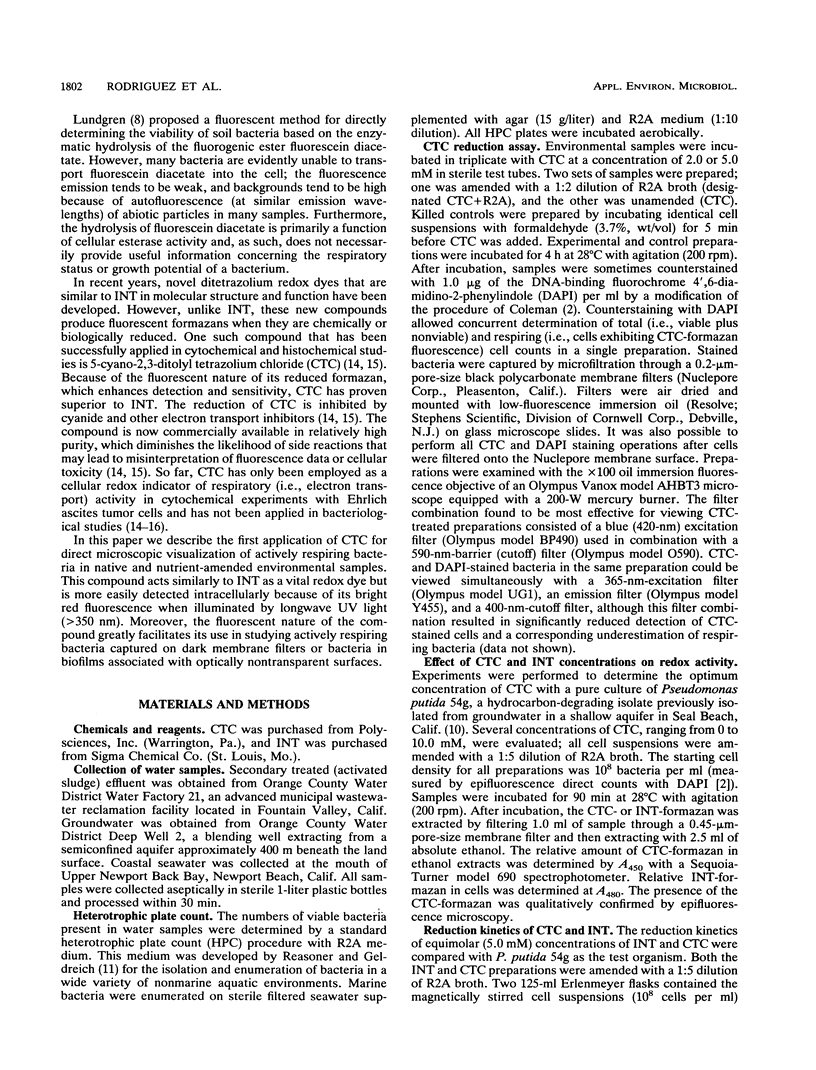
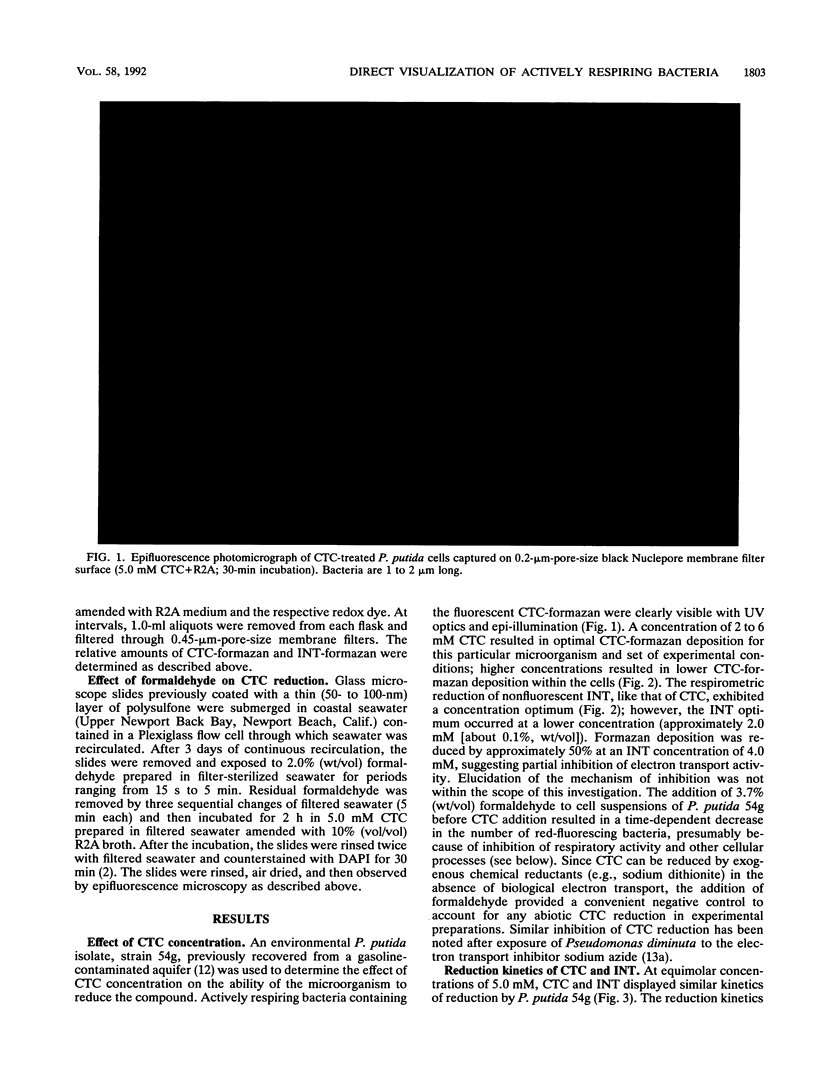
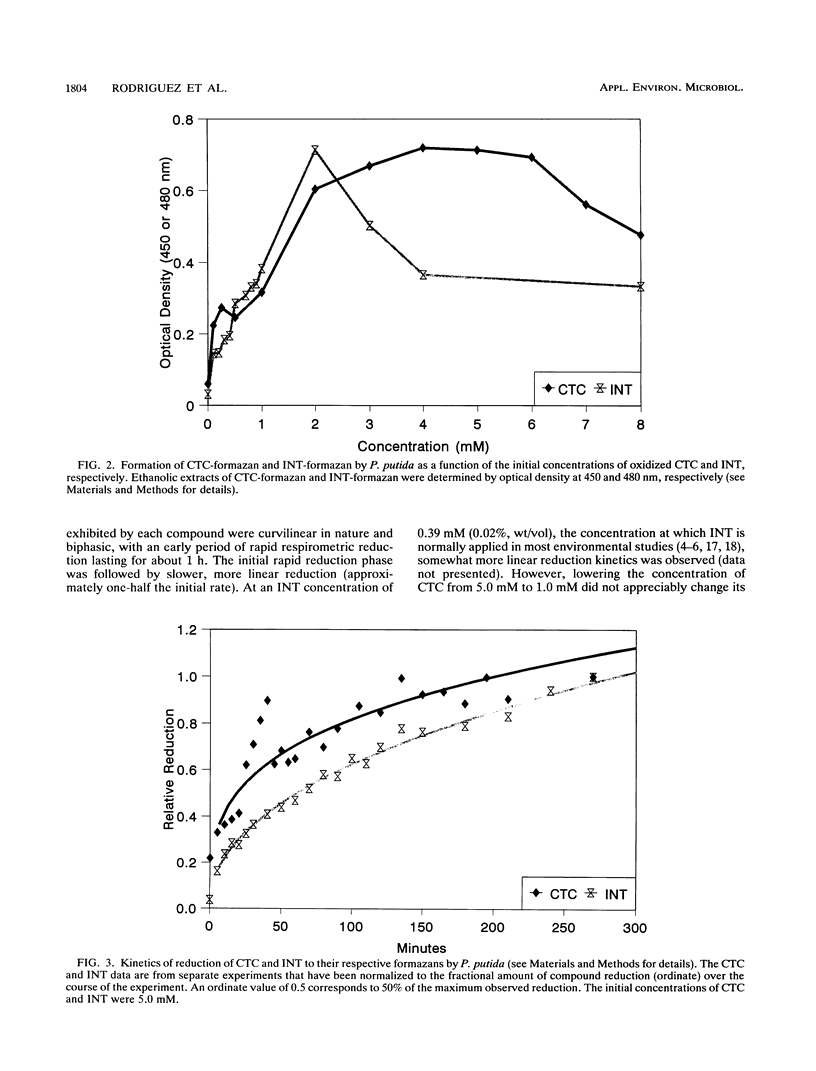
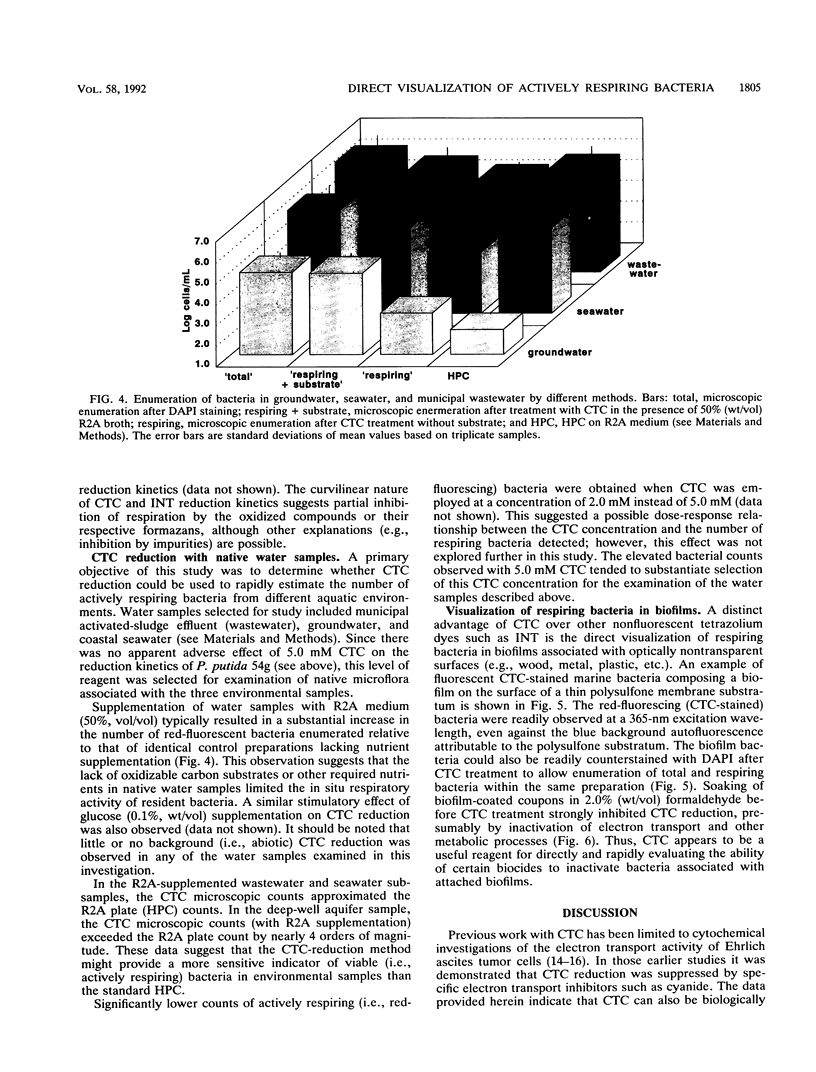
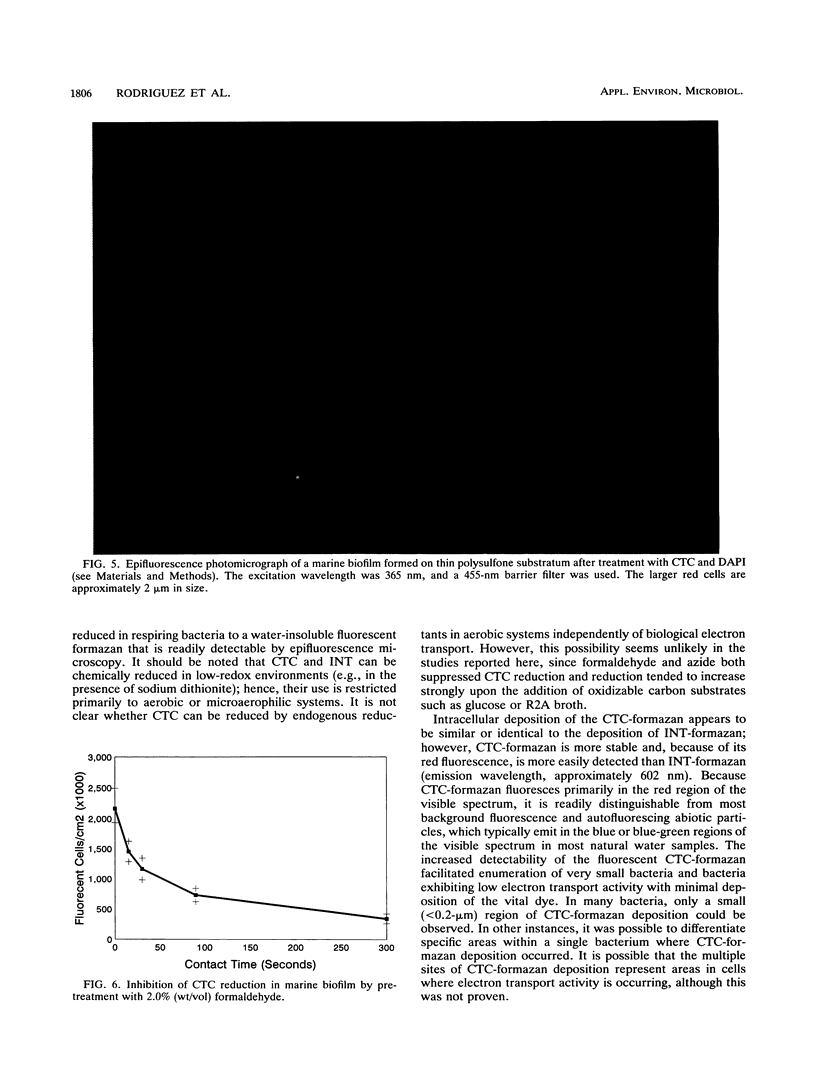
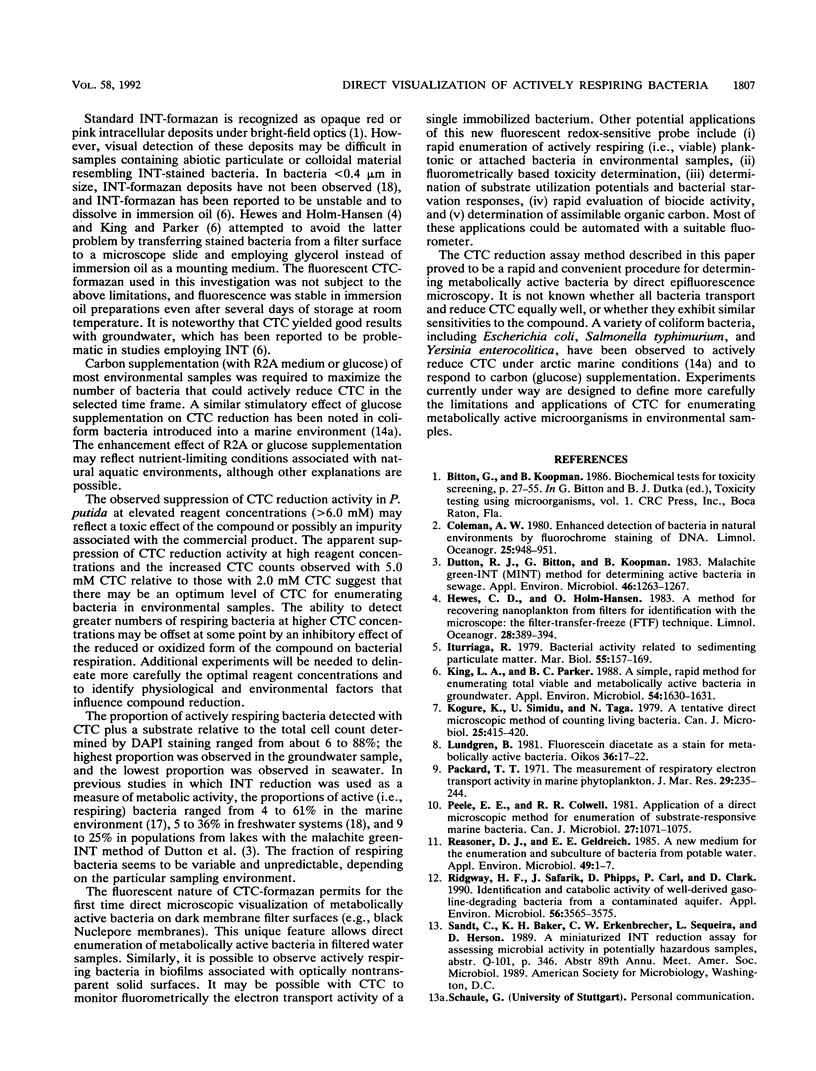

Images in this article
Selected References
These references are in PubMed. This may not be the complete list of references from this article.
- Dutton R. J., Bitton G., Koopman B. Malachite green-INT (MINT) method for determining active bacteria in sewage. Appl Environ Microbiol. 1983 Dec;46(6):1263–1267. doi: 10.1128/aem.46.6.1263-1267.1983. [DOI] [PMC free article] [PubMed] [Google Scholar]
- King L. K., Parker B. C. A simple, rapid method for enumerating total viable and metabolically active bacteria in groundwater. Appl Environ Microbiol. 1988 Jun;54(6):1630–1631. doi: 10.1128/aem.54.6.1630-1631.1988. [DOI] [PMC free article] [PubMed] [Google Scholar]
- Kogure K., Simidu U., Taga N. A tentative direct microscopic method for counting living marine bacteria. Can J Microbiol. 1979 Mar;25(3):415–420. doi: 10.1139/m79-063. [DOI] [PubMed] [Google Scholar]
- Reasoner D. J., Geldreich E. E. A new medium for the enumeration and subculture of bacteria from potable water. Appl Environ Microbiol. 1985 Jan;49(1):1–7. doi: 10.1128/aem.49.1.1-7.1985. [DOI] [PMC free article] [PubMed] [Google Scholar]
- Ridgway H. F., Safarik J., Phipps D., Carl P., Clark D. Identification and catabolic activity of well-derived gasoline-degrading bacteria from a contaminated aquifer. Appl Environ Microbiol. 1990 Nov;56(11):3565–3575. doi: 10.1128/aem.56.11.3565-3575.1990. [DOI] [PMC free article] [PubMed] [Google Scholar]
- Stellmach J. Fluorescent redox dyes. 1. Production of fluorescent formazan by unstimulated and phorbol ester- or digitonin-stimulated Ehrlich ascites tumor cells. Histochemistry. 1984;80(2):137–143. doi: 10.1007/BF00679987. [DOI] [PubMed] [Google Scholar]
- Stellmach J., Severin E. A fluorescent redox dye. Influence of several substrates and electron carriers on the tetrazolium salt-formazan reaction of Ehrlich ascites tumour cells. Histochem J. 1987 Jan;19(1):21–26. doi: 10.1007/BF01675289. [DOI] [PubMed] [Google Scholar]
- Tabor P. S., Neihof R. A. Improved method for determination of respiring individual microorganisms in natural waters. Appl Environ Microbiol. 1982 Jun;43(6):1249–1255. doi: 10.1128/aem.43.6.1249-1255.1982. [DOI] [PMC free article] [PubMed] [Google Scholar]
- Zimmermann R., Iturriaga R., Becker-Birck J. Simultaneous determination of the total number of aquatic bacteria and the number thereof involved in respiration. Appl Environ Microbiol. 1978 Dec;36(6):926–935. doi: 10.1128/aem.36.6.926-935.1978. [DOI] [PMC free article] [PubMed] [Google Scholar]





